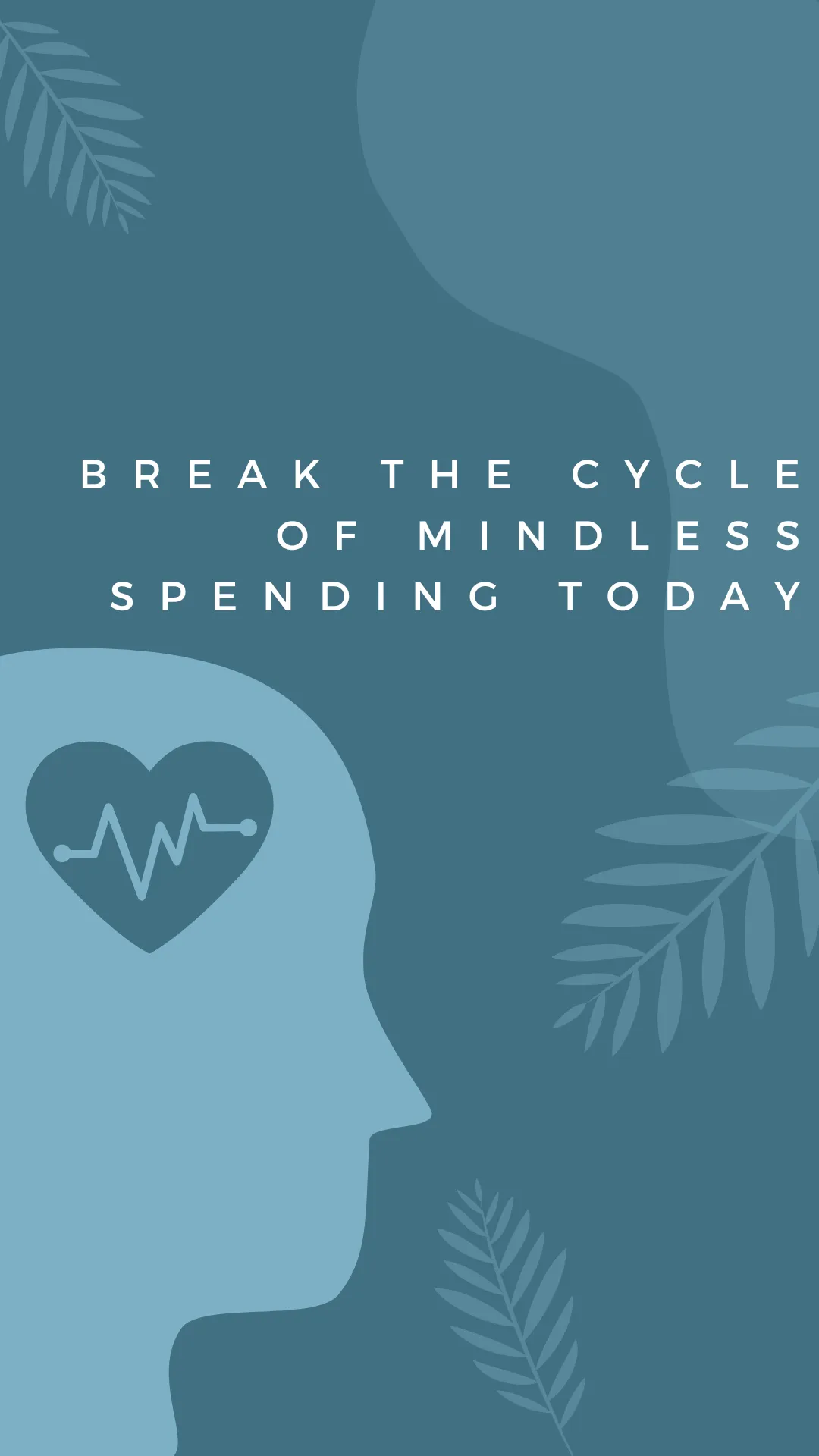
Break the Cycle of Mindless Spending Today
“Retail therapy is buying things you don't need with money you don't have." - Mokokoma Mokhonoana
Introduction:
Ever find yourself wondering where all your money went at the end of the month?
Today’s the day to stop the money drain and learn to tackle mindless spending, which is basically spending money without much conscious thought, sometimes driven by emotions like boredom, fear, or even excitement.
It could be to make yourself feel better or even spending just because of a sale, but you don’t even need the item.

With that said, here are 3 reasons women mindlessly spend.
1. Emotional Spending
Ever had a rough day and found yourself adding items to your online cart? You're not alone. Emotional spending is a common coping mechanism for stress, anxiety, or depression.
According to a study by the American Psychological Association, many people use spending as a way to distract themselves from negative feelings. This behavior is particularly prevalent among women, who often turn to shopping as a form of "retail therapy" to lift their spirits.
In fact, a recent survey found that 35% of women admit to overspending due to stress, compared to 24% of men. The act of buying something new can provide a temporary emotional boost, but it often leads to regret and financial strain later on.
Interestingly, a study by Empower revealed that 43% of Gen Zers spend money when bored, and women are 37% more likely than men to spend money when bored.
This trend is not just limited to boredom or stress; excitement can also play a significant roles, with 22% of people overspending from being excited. These emotional triggers highlight the complex relationship between our feelings and spending habits.
2. Cultural and Social Influences
The pressure to keep up with trends and appearances is another significant factor driving mindless spending among women.
Social media platforms like Instagram and Pinterest are filled with images of the latest fashion trends, luxury vacations, and must-have gadgets. This constant exposure can create a sense of inadequacy and the need to "keep up with the Joneses." A study by World Finance revealed that women are more likely than men to interact with brands on social media. This engagement often translates into purchases, driven by the desire to fit in.
Moreover, social media influencers often promote a lifestyle that seems attainable but is often far from reality. The illusion that everyone else is living a glamorous life can lead to impulsive buying decisions.
3. Convenience and Accessibility
The rise of e-commerce has made shopping more convenient than ever. With just a few clicks, you can have anything delivered to your doorstep. This ease of access can lead to impulsive buying, especially when combined with emotional triggers. A study published in Information Science Letters found that the convenience and accessibility of online shopping have contributed to compulsive buying behavior among women. The ability to shop 24/7 without leaving the comfort of your home makes it easier to give in to the urge to spend.
One-click purchases and "buy now, pay later" services further exacerbate the problem. These features remove the friction from the buying process, making it almost too easy to make impulsive purchases. The immediate gratification of receiving a new item can be addictive, leading to a cycle of spending and debt.
Why Common Solutions Often Fail
Generic advice can be too simplistic because they often fail to address the underlying psychological and emotional triggers that drive spending behaviors.
Generic advice may offer only temporary relief and fail to bring about lasting behavioral change.
A Different Approach: Mindful Spending
A mindful approach to spending works better because it involves identifying the triggers that drive your spending habits, such as stress, boredom, or social pressure.
By understanding these triggers, you can develop strategies to manage them effectively. For instance, if you recognize that you tend to shop when you're stressed, you can find healthier ways to cope, like exercising or journaling.
Similarly, if boredom leads to unnecessary purchases, engaging in hobbies or social activities can help fill that void. Practicing gratitude further enhances this mindful approach by shifting your focus to appreciating what you already have, which reduces the urge to buy more.
This shift in mindset helps you make more deliberate and thoughtful financial decisions, ultimately leading to better financial health and emotional well-being.
3 Actionable Steps to Practice Mindful Spending Today
Identify Your Spending Triggers: Take time to understand what drives your spending habits. Is it stress, boredom, or social pressure? By recognizing these triggers, you can develop healthier coping mechanisms. For example, if you tend to shop when stressed, consider alternative activities like exercising, journaling, or talking to a friend.
Track Your Spending: Keep a detailed record of every purchase to identify patterns and triggers. Use apps or a simple notebook to log your expenses. This practice helps you become more aware of where your money is going and allows you to make adjustments as needed
Practice Gratitude: Focus on appreciating what you already have. Regularly reflect on the things you are grateful for, which can reduce the urge to buy more. Studies have shown that practicing gratitude can combat the tendency toward instant gratification and impulse spending, fostering a sense of contentment and fulfillment
By incorporating these steps into your financial routine, you can develop a more mindful approach to spending, leading to better financial health and emotional well-being.
Conclusion
Mindless spending is a common issue, particularly among women, driven by emotional triggers, social pressures, and the convenience of modern shopping. Understanding why we overspend is the first step towards regaining control.
Remember, it's not about depriving yourself but about making smarter choices that align with your values and long-term goals.
Start implementing these steps today, and you'll be on your way to breaking the cycle of mindless spending and achieving financial freedom.
Legal Disclaimer: This content is not financial advice and is for informational purposes only. Always consult with a qualified financial professional before making any financial decisions.
